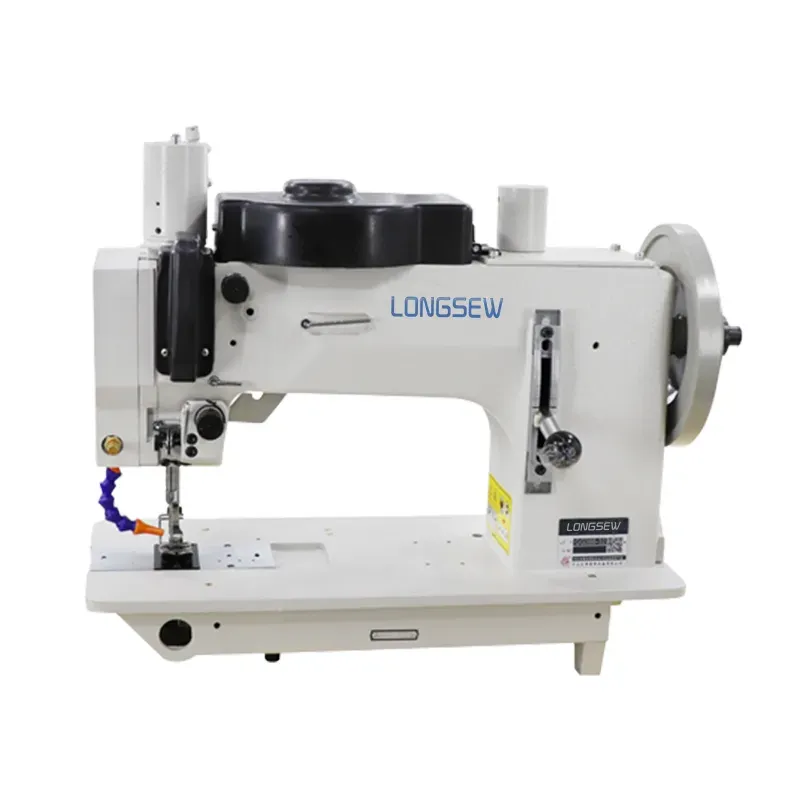sewing through leather
Sewing Through Leather A Guide to Craftsmanship and Techniques
Leather, renowned for its durability and aesthetic appeal, is a favored material among artisans and hobbyists alike. Whether you are creating leather goods as a hobby or aiming to build a small business, understanding the techniques and tools for sewing through leather is essential for achieving high-quality results. This article will explore the methods, tools, and tips you need to master this timeless craft.
Understanding Leather Types
Before diving into sewing, it's important to familiarize yourself with the various types of leather. Leather can be broadly classified into two categories vegetable-tanned and chrome-tanned. Vegetable-tanned leather is made using natural tannins found in plants and is known for its ability to age beautifully, developing a patina over time. Chrome-tanned leather is processed using chemicals, resulting in a softer and more pliable material. Choosing the right type of leather for your project can significantly influence the final product, so consider the intended use and desired aesthetics.
Essential Tools for Sewing Leather
When it comes to sewing leather, having the right tools is crucial. Here’s a list of essential items to keep in your toolkit
1. Leather Needle Unlike regular sewing needles, leather needles have a wedge-shaped point that helps to pierce through tough material without causing unnecessary damage.
2. Heavy-Duty Thread Choose a strong, durable thread, ideally made from polyester or nylon, that can withstand wear and tear. Thread thickness should match the weight of the leather you’re using.
3. Cutting Tools A sharp rotary cutter or utility knife is ideal for cutting leather cleanly. Steel rulers and cutting mats will ensure precise cuts.
5. Marquee and Clamp Use a marquee to mark sewing lines clearly, and clamps to hold your leather pieces in place while sewing.
6. Thimble Protect your fingers during the sewing process, especially when working with thick layers.
Sewing Techniques for Leather
sewing through leather

There are several sewing techniques that can be employed when working with leather
1. Hand Sewing Hand sewing is an excellent choice for detail-oriented projects. Use a saddle stitch technique, which involves sewing through from both sides and results in a strong and attractive finish. This method is especially useful for seams that might endure significant stress.
2. Machine Sewing For larger projects or when speed is necessary, a heavy-duty sewing machine can be utilized. Ensure your machine is equipped with a walking foot and a leather needle to handle the thickness.
3. Lacing This decorative technique employs a lace or cord instead of traditional thread. It adds texture and visual interest, making it ideal for bags or wallets.
4. Edge Finishing Pay special attention to the edges of your leather pieces. Use edge tools to bevel, burnish, and seal the edges for a polished look.
Tips for Successful Leather Sewing
- Practice on Scraps Before working on your final project, practice on leather scraps to familiarize yourself with handling and sewing techniques.
- Avoid Overworking the Leather Too much handling or manipulation can stretch or distort the leather. Work methodically to minimize this risk.
- Use Adhesives Sparingly While adhesive may help hold layers together temporarily, limit its use to prevent unwanted residue affecting your sewing.
- Take Your Time Leather crafting is an art that requires patience. Allow yourself ample time to create your piece, ensuring that each stitch is placed thoughtfully.
Conclusion
Sewing through leather can be a rewarding endeavor for anyone interested in crafting durable and beautiful products. By arming yourself with the right tools, techniques, and a bit of practice, you can transform raw leather into stunning works of art. Whether you’re making wallets, bags, or belts, the skill of leather sewing opens a world of creative possibilities — so roll up your sleeves and start stitching!
-
Industrial Cylinder Arm Sewing Machine: Revolutionizing Heavy-Duty SewingNewsJul.28,2025
-
Cylinder Arm Sewing Machine: Perfect for Special Sewing ApplicationsNewsJul.28,2025
-
Cylinder Bed Sewing Machine: Essential for Sewing Complex MaterialsNewsJul.28,2025
-
Heavy Duty Sewing Machine: The Essential Tool for Industrial ApplicationsNewsJul.28,2025
-
Computerized Pattern Sewing Machine: Revolutionizing Precision StitchingNewsJul.28,2025
-
Heavy Duty Industrial Sewing Machine: Power Meets PrecisionNewsJul.28,2025
-
Leather Sewing Machine: The Industrial Standard for Tough MaterialsNewsJul.18,2025





























